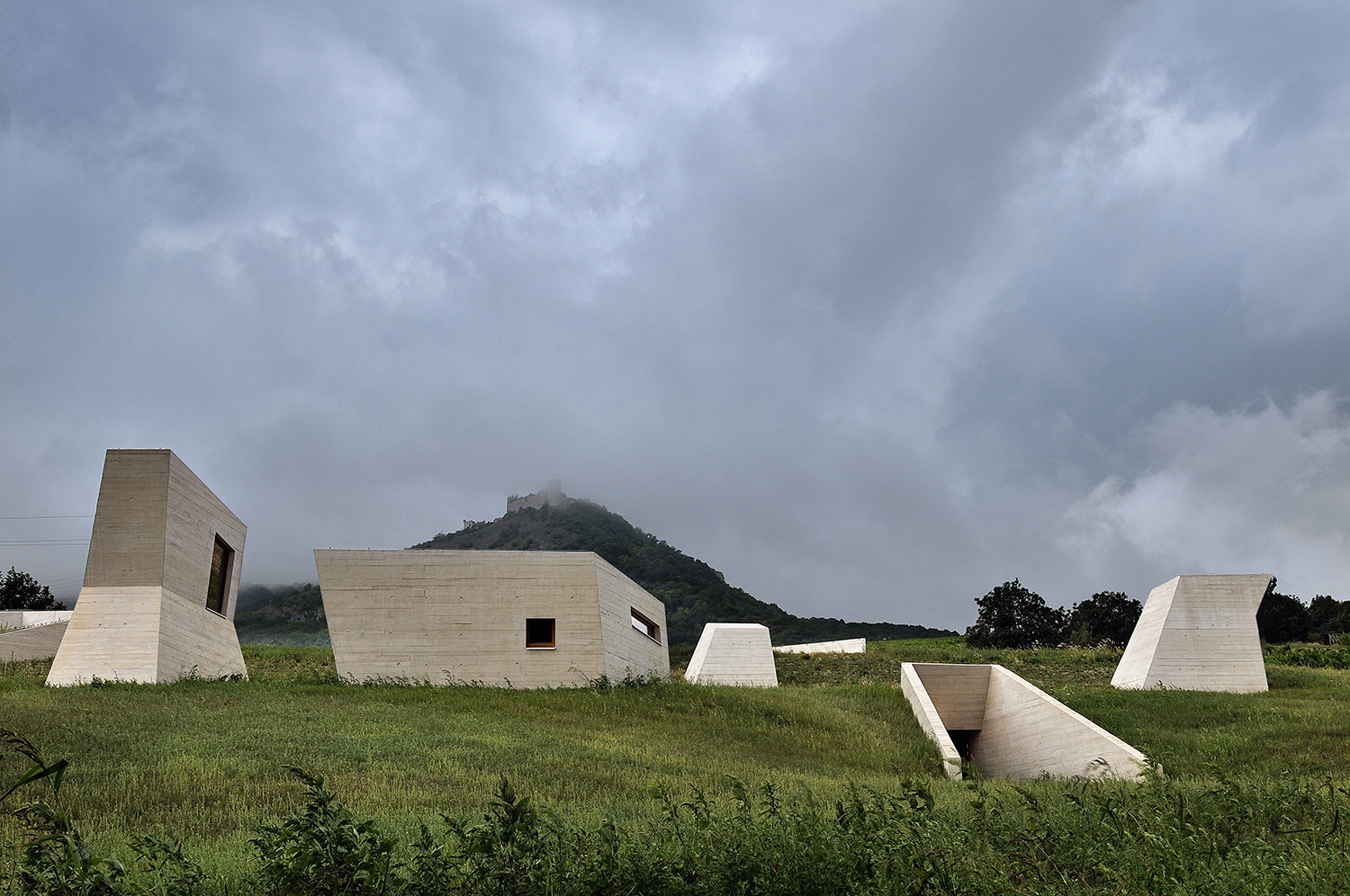Introduction
The idea for the museum was first mooted in 2002 by the Institute of Archeology of the CAS, Brno, which is now also an expert partner and sponsor of the project. The project was prepared by the Regional Museum in Mikulov in cooperation with the Radko Květ architectural studio. Construction was then carried out jointly by OHL ŽS, a.s. and SKRstav, s.r.o. Pixl-e was the contractor for the exhibition, while the furniture and audiovisual technology were supplied by A.M.O.S. Design, s.r.o. and Lotech, s.r.o, respectively.
Archaeological aspects: Dolní Věstonice – Pavlov – Milovice locations
For many decades now, excavations at the complex of Palaeolithic (the period of mammoth hunters) settlements have unearthed a huge number of stone and bone tools and artwork, as well as the skeletal remains of anatomically modern humans. This puts Pavlov and Dolní Věstonice high on the list of the world’s leading archaeological sites. The site reminds us of a past historic age and is both part of the universal cultural heritage and a symbolic integral element of the local culture, fundamentally forming a relationship between the local population and the region. It has embodied cultural values that the local population takes pride in and establishes their relation to the country.
This outstanding and attractive architecture and exhibition covers an area in excess of 500 m2 and combines contemporary audiovisual technology with traditional museum displays. It allows the public to become acquainted with the most important discoveries that scientific research has uncovered here. In addition to photographs and documents that detail the history of the various digs at these sites, the museum will also display the actual finds and explain the spiritual world of these ancient people. Special emphasis will be placed on topics such as hunting, the everyday life of hunters, their art, and their burial rituals, as well as other aspects of their world.
The Archeopark may well become an attractive destination for culturally inclined tourists and integrate well with the region’s current tourist infrastructure.
Urban and architectonic solution
The project resolved the urban and architectonic issues of the site, including the technical and traffic aspects together with the flora of the surrounding landscape. The Archeopark has a delicate location in the sense of broader urbanistic considerations. It is located on the border between the village boundary and the open countryside and forms part of the Pálava hills’ impressive scenery. The majority of the construction is situated underground, with just the white concrete towers projecting above ground.
The architectonic solution is based on the location’s conditions and formed according to three principal aspects:
- The construction site is part of a national cultural monument, limiting construction to the area already archaeologically excavated and researched, with the only exception being the “in situ” exposition.
- We assumed the archaeological excavations are located 4–5 meters under the current terrain.
- The construction site is part of a protected landscape area (PLA).Based on these aspects, the concept of an underground construction arose together with the loose paraphrase of “limestone rocks standing out from green meadows and vineyards”.
The main exhibition area—as well as the administrative, technical and social areas—is hidden in the hillside. The skylight tower projects to the exterior, as does the conical entrance and the look-outs to Děvičky and the lake below. The intention is for the building to be reminiscent of the shape of a cave. Regarding the materials, up-to-date means are used to express monolithic reliefs with concrete, oak wood and glass.
The entrance area is defined by gabion walls and forms when entering the Archeopark. This zone is multifunctional: It could be used also for open-air activities, such as theatre performances or further background for archaeological works.
This open-air landscape project accommodates spatial and functional use of the area while subtly contributing to the scenery under the Děvín hill.
Technical solutions: Methods of projection and the thrilling process during the construction work
The museum itself is a reinforced monolithic building made from relief concrete in a watertight system. The sharply shaped ceiling is supported by the walls and towers with no additional support required. The complexity of the shapes is exceptional, and unusual sandwich construction structures are used for the elements projecting above the ground.
From creating the very first sketches to compiling the plan for the building permit, we designed the building using sketches, paper models, 3D models and orthogonal drawings. During the implementation phase of the project, we developed a 3D construction model that was later systematically disassembled into its individual parts. These parts were subsequently dimensioned and designed by construction industry professionals and ultimately reassembled. During the construction work, we referred to both the 3D construction model and the orthogonal drawings. The platform and building height were delimitated geodetically.
Changes during the construction:
The archaeological excavations preceding construction revealed a waste hole filled with bones. As this was a significant part of this national cultural monument, it was decided to preserve and display this location. Based on this decision, we decided to adapt the project in two relevant spots.
The “in situ” exposition presents the preserved waste hole of mammoth bones following the archaeological research conducted in 2014. We were forbidden from intervening in locations where future archaeological research may be conducted. Once the general research had been carried out, the waste hole was covered with a layer of sand and shielded by a temporary wooden construction that was later replaced by bracing walls and a foundation system. The protective sand layer was only removed once the building of the museum was completed.



